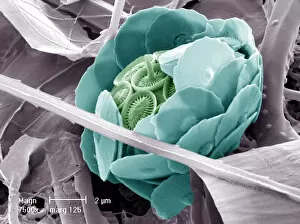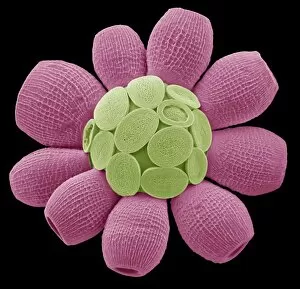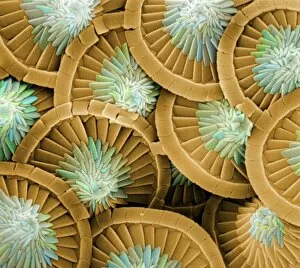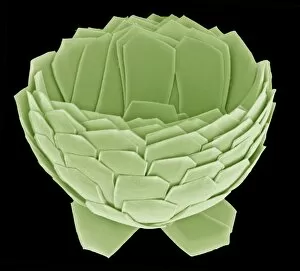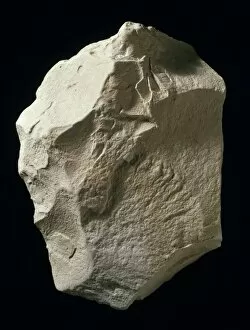Prymnesiophyceae Collection
Prymnesiophyceae, a fascinating group of marine microorganisms, includes various species such as Emiliania huxleyi coccosphere, Syracosphaera anthos
All Professionally Made to Order for Quick Shipping
Prymnesiophyceae, a fascinating group of marine microorganisms, includes various species such as Emiliania huxleyi coccosphere, Syracosphaera anthos, Scyphosphaera apsteinii, and many more. These organisms are commonly known as coccolithophores due to their unique characteristic feature - the presence of intricate calcite plates called coccoliths. One prominent member is Emiliania huxleyi coccosphere. This species forms large blooms in oceans worldwide and plays a crucial role in the carbon cycle by absorbing atmospheric CO2 through photosynthesis. Its beautiful spherical structure adorned with delicate coccoliths makes it an enchanting sight under the microscope. Another noteworthy member is Syracosphaera anthos, which exhibits stunning star-shaped structures composed of intricately arranged coccoliths. These mesmerizing formations can be found floating on the ocean's surface or forming part of sediments on the seafloor. The diversity within Prymnesiophyceae extends further with Acanthoica acanthifera, Coccolithus pelagicus, Florisphaera profunda, Ophiaster formosus, Pontosphaera japonica and others. Each species has its own distinct morphology and ecological significance within marine ecosystems. Scientists have even created models like Kamptnerius magnificus to better understand these remarkable organisms' complex structures and functions. The study not only unravels their evolutionary history but also sheds light on their ecological roles as primary producers supporting marine food webs. From providing essential habitats for other marine life to influencing global climate patterns through carbon fixation processes, Prymnesiophyceae play a vital role in maintaining our planet's health.


